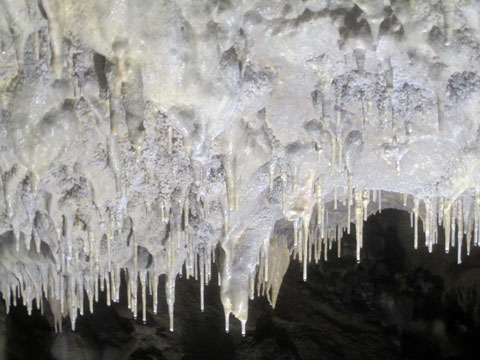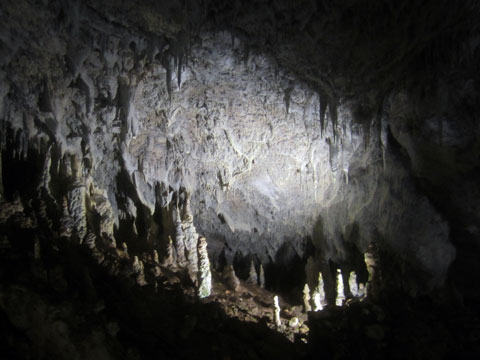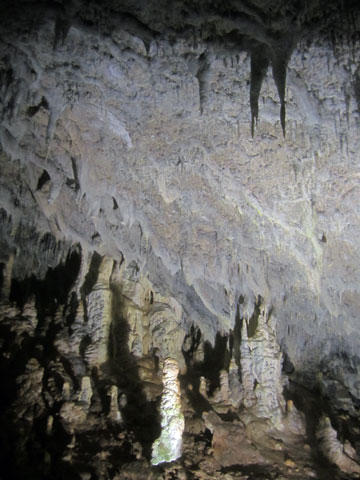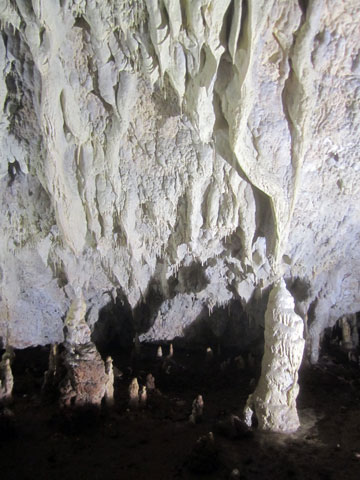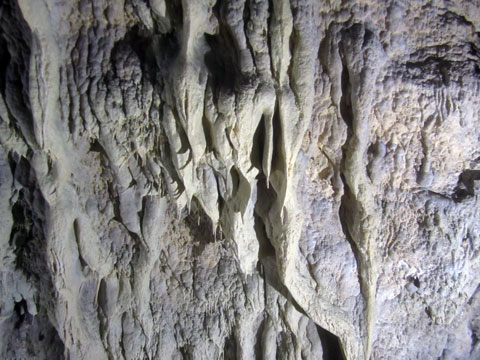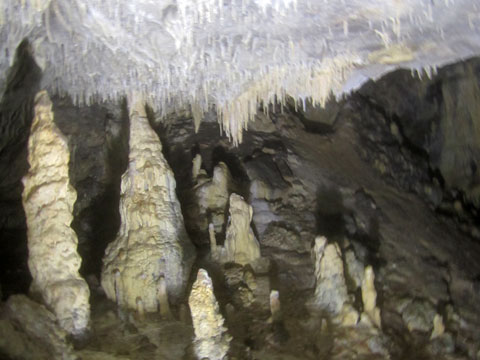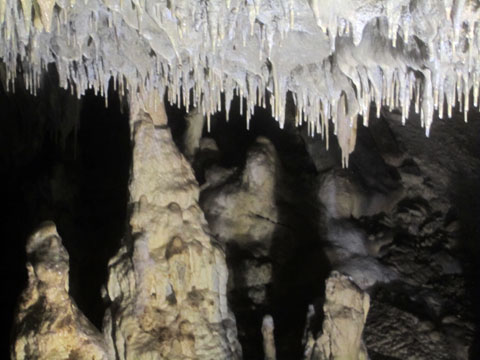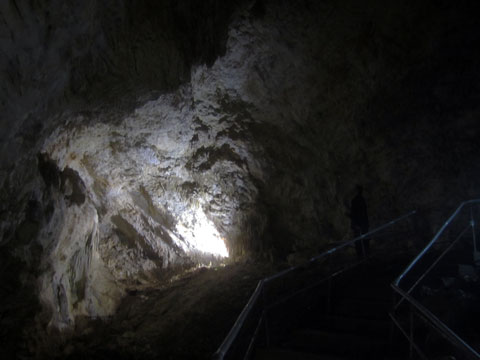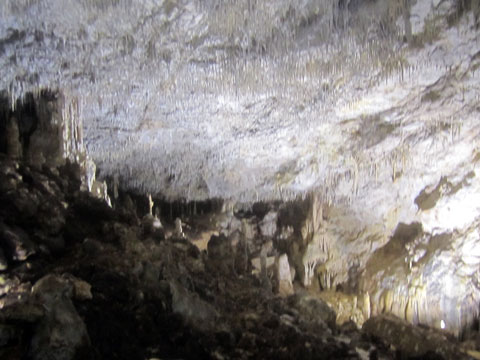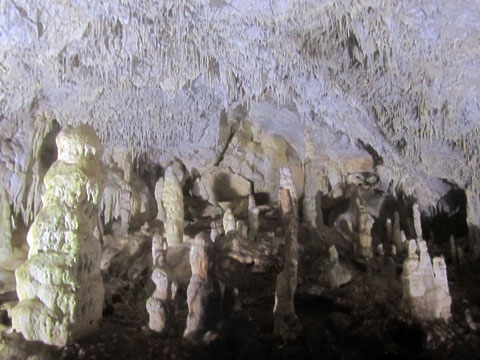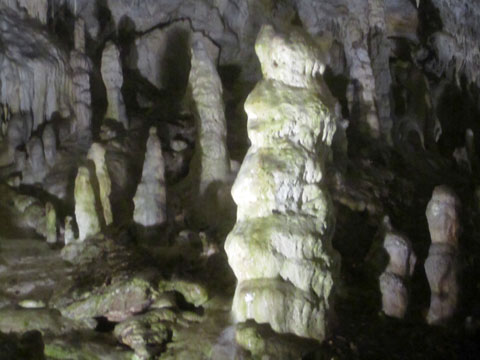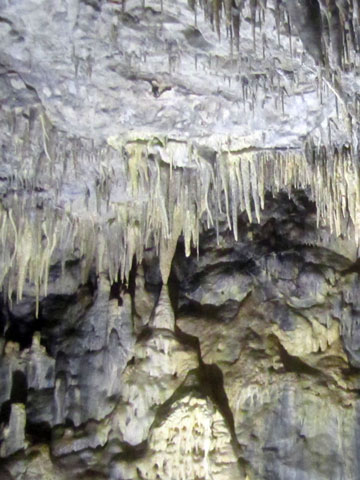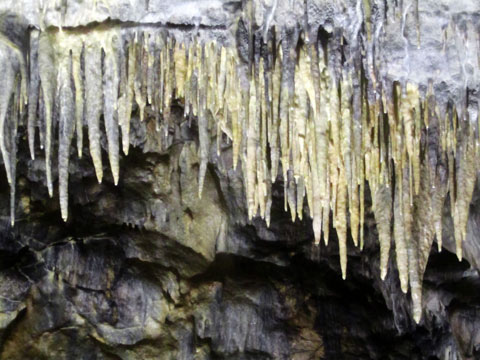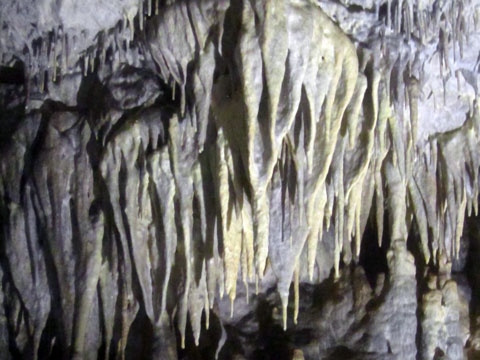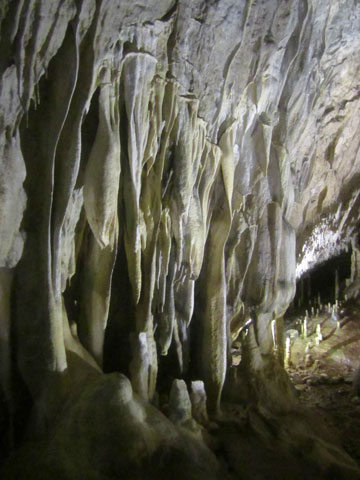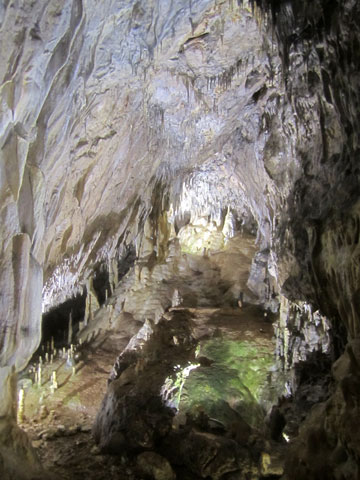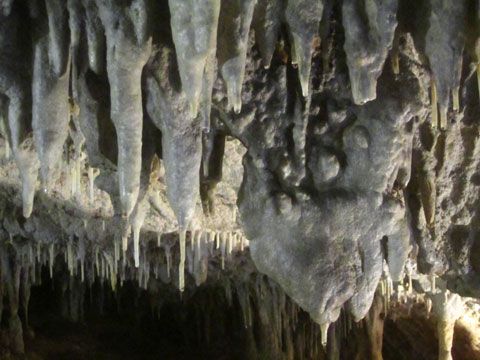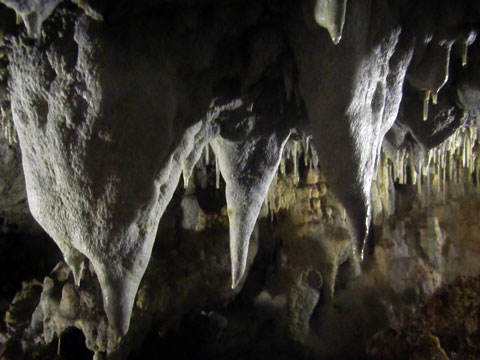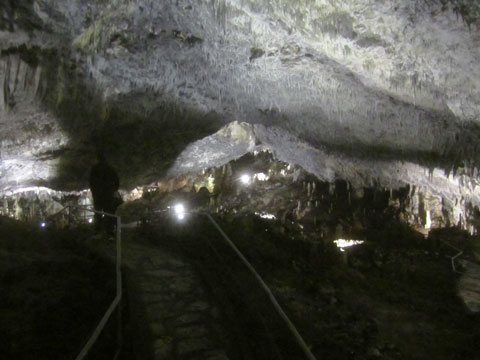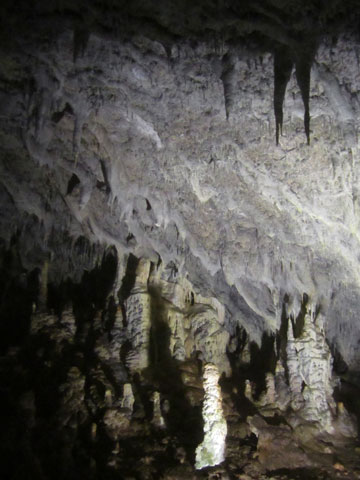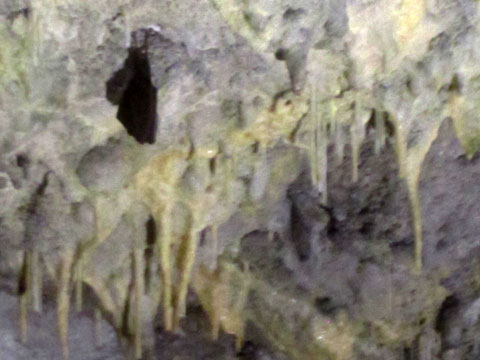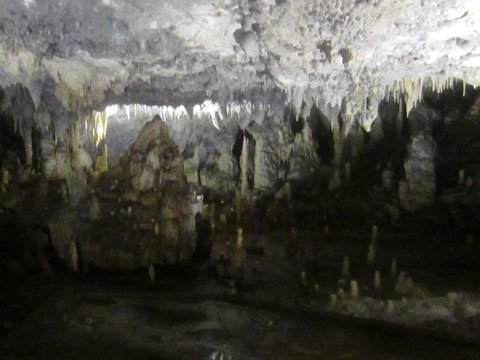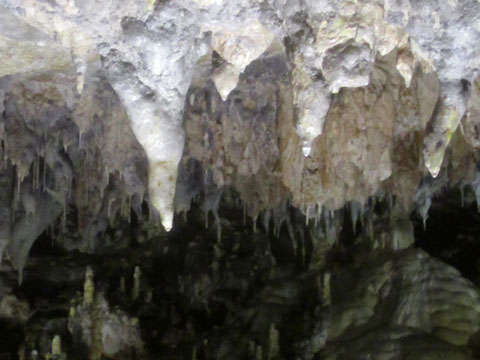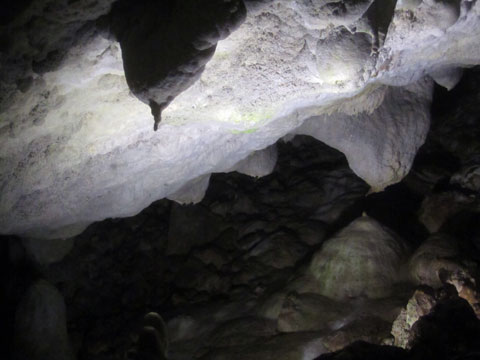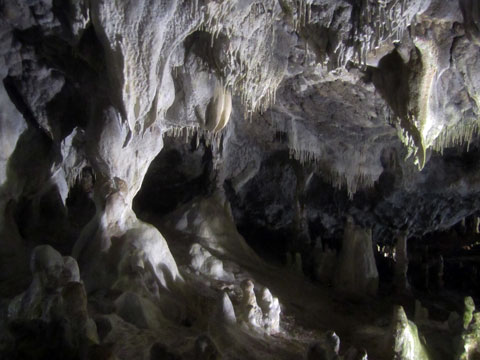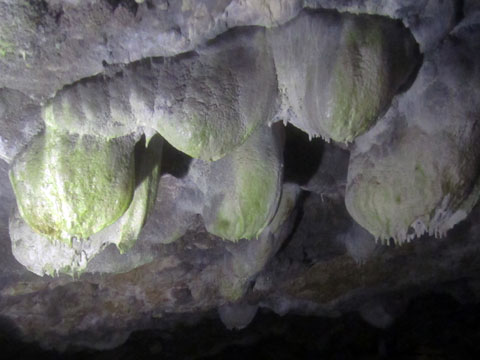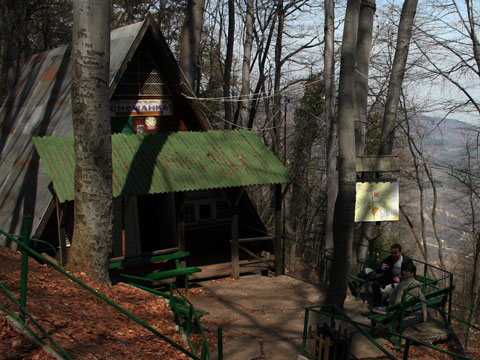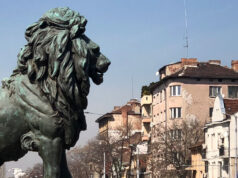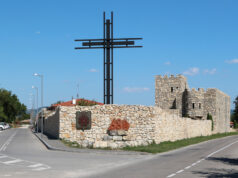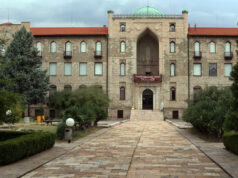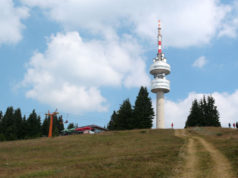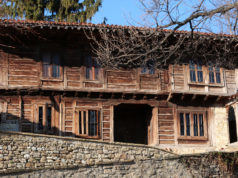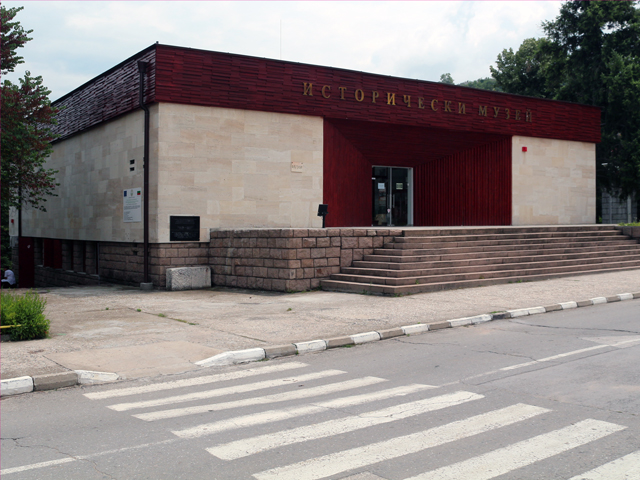Snezhanka Cave (BG: Пещера Снежанка) is one of the most beautiful natural caves in Bulgaria. Formed over 3.5 million years ago, the march of time and natural processes have produced within its halls a wonderland of snow white stalactites, stalagmites, draperies, ribbons and flows that give the cave its name.
Located only five kilometers from Peshtera in the foothills of the Rhodopi mountains, it is one of the most popular caves in Bulgaria and is included as number 37 in the Bulgarian Тourist Union лист of 100 national tourist sites. It is locally called “the pearl of the Rhodopis.”
Discovery and Exploration
The cave was discovered accidentally on 3 January, 1961, by three intrepid explorers, Boris Eftimov, Gencho Kotzev and Georgi Zlatarev, members of the local tourism association. The mountaineers entered the cave in the morning and stayed over twelve hours, mesmerized by the unfolding beauty inside.
The cave was declared a protected natural site the same year, and subsequently explored by scientists from the Bulgarian Academy of Sciences. It is the ongoing subject of investigations related to biodiversity, climate and geology.
The cave was equipped with lights and other improvements in 1968.
Physical Description of Snezhanka Cave
Snezhanka Cave is of modest size by most standards, measuring only 145 meters (475 feet) along its central axis. If laid end to end, the total length of the public galleries is just 220 meters (722 feet.) The area of the cave is about 3150 square meters (34,000 square feet), and the height of the highest dome, at the top of the Great Hall, is over 10 meters (40 feet.)
The temperature inside the cave is a constant 6° C (43° F) year round.
A Tour of Snezhanka Cave
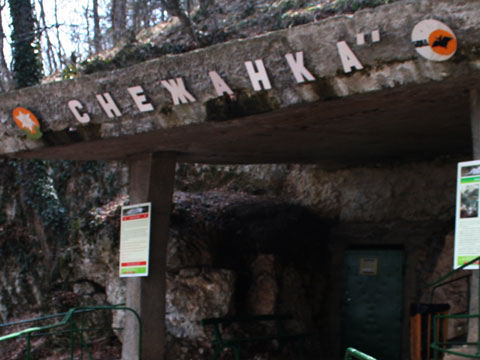 What Snezhanka lacks in size, she makes up for in beauty. The entrance is a concrete monstrosity, but don’t let that put you off. The interior of the cave is equipped with lights for safety and visual appeal. Paths are well designed and about as good as can be expected for the environment. Once inside it is easy to enjoy the beautiful formations decorating the cave.
What Snezhanka lacks in size, she makes up for in beauty. The entrance is a concrete monstrosity, but don’t let that put you off. The interior of the cave is equipped with lights for safety and visual appeal. Paths are well designed and about as good as can be expected for the environment. Once inside it is easy to enjoy the beautiful formations decorating the cave.
The cave consists of six names galleries, each with its own special attraction. Only five were open when we visited.
The Great Hall is the largest gallery, a very large room with many different kinds of formations inside it and along its walls and ceilings. Archaeologists discovered an ancient hearth in the middle of the hall, surrounded by animal bones and other artifacts. It is believed that Thracians used the cave as a temporary shelter around 600 BCE, perhaps as a hiding place from their enemies.
The Music Hall is adjacent to the Great Hall. It is called the music hall in reference to its fine natural acoustics.
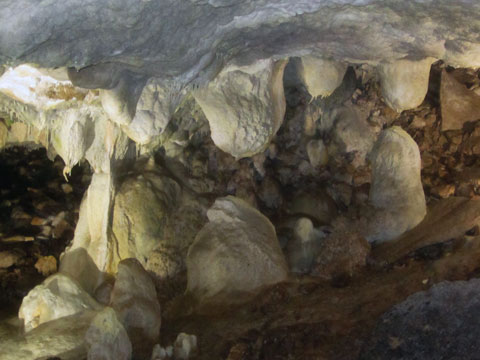 The Hall of Udders. As can be imagined from its name, this is a gallery rich in stalactites and stalagmites, especially groupings that are thick and hang like udders from a cow. Judging from the size of the formations, whoever did the naming has an over-active bovine imagination!
The Hall of Udders. As can be imagined from its name, this is a gallery rich in stalactites and stalagmites, especially groupings that are thick and hang like udders from a cow. Judging from the size of the formations, whoever did the naming has an over-active bovine imagination!
The Residence takes its name from the bones, ceramics, and other remains found here during archaeological excavations. Pottery found here was of an early kind handcrafted without the use of a potter’s wheel, which suggests the inhabitants predated the Thracians in the area.
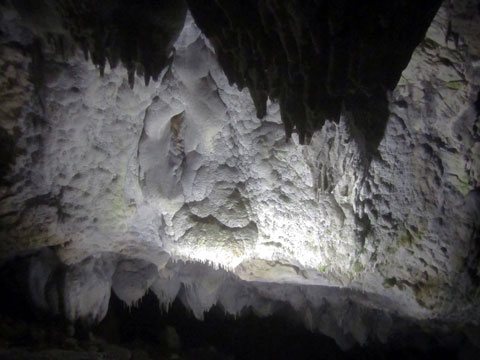 The Magical Hall is perhaps the most beautiful. The entire hall is covered in sparkling, snow white crystals that really do make the atmosphere seem magical. In the center of the hall is a formation like the figure of a woman, from which the entire cave takes its name. (Snezhanka in Bulgarian means Snow White.)
The Magical Hall is perhaps the most beautiful. The entire hall is covered in sparkling, snow white crystals that really do make the atmosphere seem magical. In the center of the hall is a formation like the figure of a woman, from which the entire cave takes its name. (Snezhanka in Bulgarian means Snow White.)
The Hall of Beards is noteworthy for the rows of small stalactites resembling beards.
Bats in Snezhanka Cave
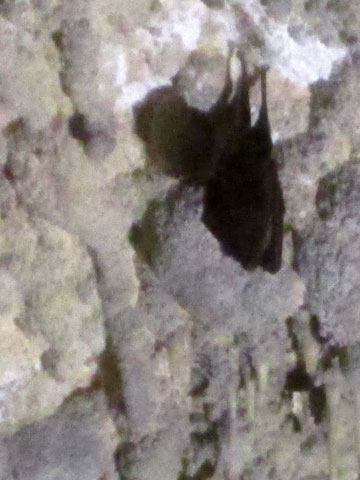 The cave is home to 4 species of bats:
The cave is home to 4 species of bats:
- Greater Horseshoe Bat (Rhinolophus ferrumequinum)
- Lesser Horseshoe Bat (Rhinolophus hipposideros)
- Geoffroy’s Bat (Myotis emarginatus)
- Greater Mouse-eared Bat (Myotis myotis)
None of the bat species is strictly endangered, but they have been in decline in some areas due to loss of habitat and other environmental factors. All of the species enjoy protected status in Bulgaria. The bats are a constant presence in the cave and can be seen hanging from the walls and ceilings in the public areas. Please do not disturb the bats while in the cave!
Getting There:
Snezhanka Cave is located 5 kilometers south of the town of Peshtera.
From the Trakia Highway (A1 / E80), exit south on Route 37 , direction Pazardzhik. Stay on Route 37, passing through Pazardzhik, driving 29 kilometers to Peshtera. Continue on Route 37 thorugh Peshtera, following signs for Batak. Three kilometers past Peshtera, turn left onto a narrow asphalt road towards Peshtera Snezhanka. After two kilometers park at the lot and continue on foot.
The footpath to the cave entrance is 830 meters long. The approach is a rather steep 30 minute walk from the parking lot. There are rest points along the way, but no handicapped access to the site.
For More Information:
Kurena Tourism Association
16 Ivan Popov St.
Peshtera
Bulgaria
(t) +359 (0)35 02359
(t) +359 (0)896 715 972
The cave is sometimes advertised as open every day, all year round, but be sure to check by phone during the off season to avoid disappointment. We are pretty sure the cave follows a more limited schedule in winter.


